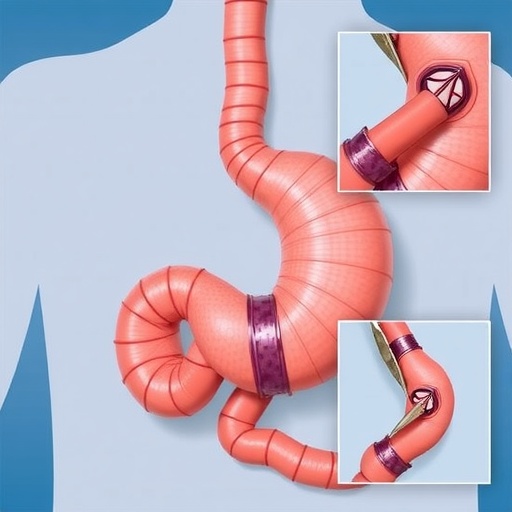In a groundbreaking study published in the latest volume of BMC Cancer, researchers have shed new light on the prognostic implications of progression within 24 months (POD24) in multiple myeloma using both classical statistical methods and cutting-edge machine learning techniques. This comprehensive analysis not only confirms the adverse impact of early disease progression on overall survival but also pioneers the application of artificial neural networks (ANN) enriched by SHAP interpretability to refine mortality risk prediction models for multiple myeloma patients.
Multiple myeloma, a malignancy of plasma cells, has long challenged clinicians due to its heterogenous clinical course and unpredictable outcomes. POD24, defined as disease progression within two years post-diagnosis, has been widely recognized as a harbinger of poor prognosis. However, prior investigations have largely relied on traditional survival analyses without delving into the nuanced layers of patient data that machine learning can unravel. This study’s dual approach offers a robust framework to decode complex prognostic patterns that classical analyses might overlook.
The investigative team retrospectively assembled a dataset encompassing clinical information from 155 patients diagnosed with multiple myeloma and stratified them into POD24 and non-POD24 cohorts. Employing Kaplan-Meier survival curves and Cox proportional hazards regression models, they demonstrated a statistically significant reduction in overall survival for patients experiencing POD24, echoing earlier reports but with enhanced confidence due to a rigorous data curation and analysis pipeline.
Pushing beyond conventional statistics, the researchers implemented ten different machine-learning algorithms to gauge their efficacy in predicting overall survival outcomes based on the clinical variables. Among these, the Artificial Neural Network (ANN) emerged as the superior model, showcasing its ability to capture complex nonlinear relationships within the multivariate data. This finding underscores the growing utility of machine learning in oncology prognostication, where intricate biological interplay often defies linear modeling.
Furthering interpretability, the study harnessed Principal Component Analysis (PCA) for dimensionality reduction and visualization. PCA plots clearly delineated class separation between POD24 and non-POD24 groups, affirming that the selected features and model predictions preserved the intrinsic structure of the clinical data. This visual confirmation bolsters confidence in the machine learning model’s discriminative power and highlights the latent patterns distinguishing early progressors from their counterparts.
A hallmark of this research is the application of SHapley Additive exPlanations (SHAP), a game-theory-based method to demystify complex model outputs. SHAP values unequivocally identified POD24 status as the most influential predictive feature driving mortality risk in this patient cohort. This interpretable layer allows clinicians and researchers to understand the weight of POD24 relative to other clinical variables, enhancing trust in model recommendations and facilitating translational adoption.
The study also deployed force plots to visually encapsulate individual patient-level predictions, revealing how non-POD24 status significantly lowers predicted mortality risk. These intuitive visualizations serve as practical tools for personalized risk assessment, potentially guiding more tailored therapeutic strategies and monitoring intensities.
By integrating ANN-based mortality prediction with SHAP-driven interpretability, this work sets a precedent for transparent yet sophisticated prognostic modeling in hematological malignancies. It bridges the gap between black-box AI models and actionable clinical insights, a crucial step for precision medicine advancement.
Moreover, the evidence presented invigorates the notion that POD24 is not merely a temporal milestone but a pivotal biomarker intrinsically linked to disease aggressiveness and patient survival. Recognizing its prognostic strength through dual analytic lenses could inform future clinical trial designs, therapeutic decision-making, and patient counseling.
The implications extend to risk stratification, whereby patients identified as POD24 positive might benefit from intensified treatment regimens, closer surveillance, or novel therapies aimed at mitigating early relapse. As machine learning models mature and integrate larger datasets, personalized medicine in multiple myeloma could reach unprecedented accuracy levels.
The study’s robust methodology—combining retrospective clinical data with advanced algorithmic validation—establishes a paradigm for future research endeavors seeking to meld traditional epidemiological approaches with artificial intelligence frameworks. Such synergy promises enhanced predictive analytics capable of capturing intricacies in disease behavior.
Importantly, the authors emphasize the importance of model transparency, highlighting how explainable AI techniques like SHAP can unravel the decision-making process of complex neural networks. This transparency fosters clinician acceptance and sparks interdisciplinary collaboration between data scientists and healthcare providers.
While the cohort size of 155 patients offers valuable insights, the authors acknowledge the need for validation in larger, multicenter populations to reinforce generalizability. Additionally, integrating molecular and genomic data could further elucidate the biological underpinnings of POD24 and refine predictive accuracy.
This study exemplifies the transformative potential of combining statistical rigor with machine learning ingenuity in oncology research. It charts a promising path toward harnessing big data analytics for practical clinical prognostication, ultimately striving to improve outcomes in patients battling multiple myeloma.
As the field advances, integrating such AI-driven prognostic models into electronic health records and clinical workflows might enable real-time risk assessment, empowering clinicians to enact timely, evidence-based interventions personalized to individual patient risk profiles.
In conclusion, Zhang et al.’s investigation into the prognostic value of POD24 encapsulates a significant leap forward in multiple myeloma research, merging comprehensive statistical analyses with machine learning sophistication. Their findings underscore the vital role of early progression as a mortality predictor and illuminate the path for AI-enhanced oncology precision diagnostics.
Subject of Research: Evaluation of the prognostic significance of progression within 24 months (POD24) for overall survival in multiple myeloma, integrating traditional statistical analyses with machine learning approaches.
Article Title: The prognostic value of POD24 for multiple myeloma: a comprehensive analysis based on traditional statistics and machine learning.
Article References:
Zhang, Q., Wang, Y., Chen, Q. et al. The prognostic value of POD24 for multiple myeloma: a comprehensive analysis based on traditional statistics and machine learning. BMC Cancer 25, 1652 (2025). https://doi.org/10.1186/s12885-025-15089-6
Image Credits: Scienmag.com
DOI: https://doi.org/10.1186/s12885-025-15089-6
Tags: artificial neural networks in cancercancer prognosis and treatment strategiesclinical outcomes in multiple myelomaearly disease progression impactmachine learning in oncologymortality risk assessment in myelomamultiple myeloma progressionPOD24 prognostic significanceretrospective analysis of cancer dataSHAP interpretability in healthcarestatistical methods in cancer researchsurvival prediction models




